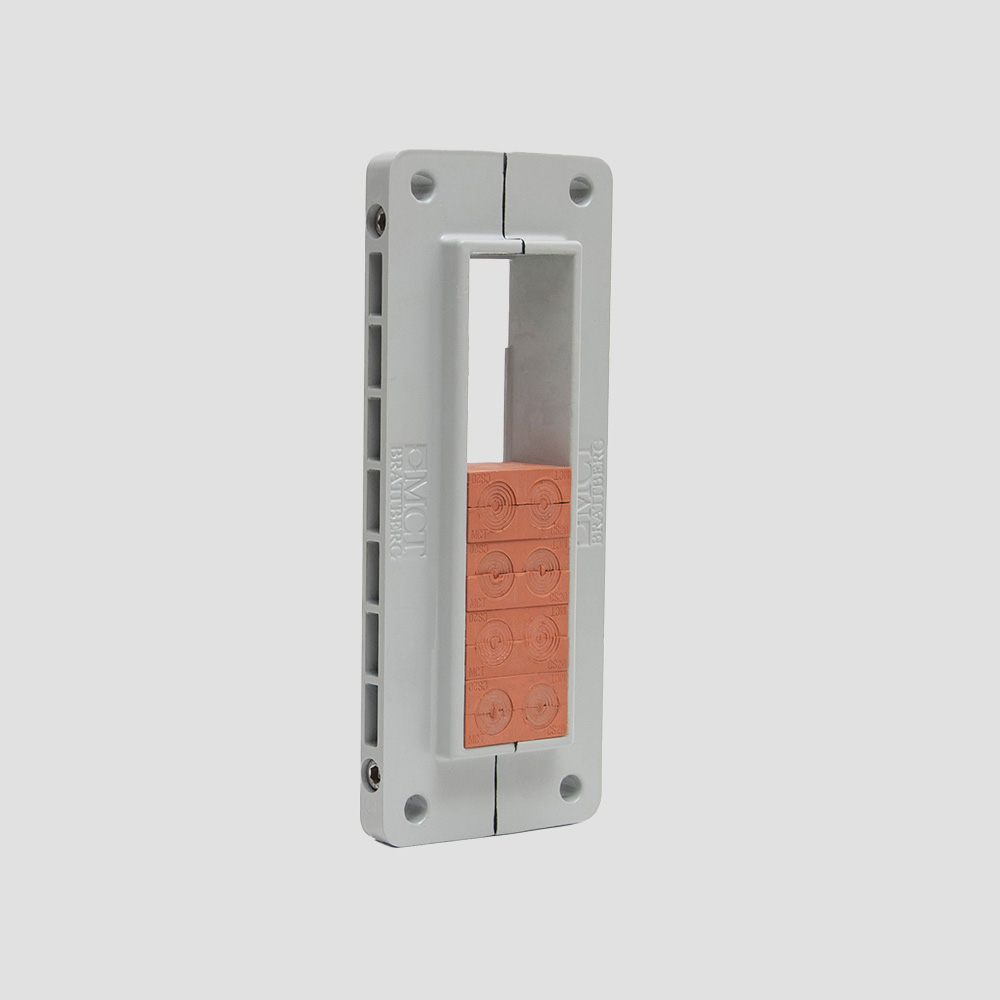Cable transits in Elektra cabinets
A box transit is made to feed a large number of cables dust and watertight on a small surface. All cables are fed through one opening, the penetration being locked with two bolts using an Allen key.
Sheet steel enclosures (such as Rittal and Eldon) are a common application for these types of cable entries. When using glands, a new hole and new gland must be made for each cable. The advantage of these cabinet seals is that only one hole is needed for the passage of several cables.
The number and type of cables that are routed through the penetration can be easily adjusted afterwards. Cables with connectors can also be easily routed through the large opening before building them up with filler blocks until the entire opening is sealed. The MCT Brattberg enclosures are standard IP66/67 waterproof (in accordance with IEC/EN 60529) and both UL50 and UL90 certified.

ALF and RFCS
MCT Brattberg has two types of cabinet penetrations in its range, the ALF and the RFCS.
The ALF consists of an aluminum frame and filler blocks with a fixed diameter, so that the matching block can be placed immediately after measuring the cable. This not only saves time, but also prevents the risk that the sealing block does not close properly around the cable. The ALF transit is also available in an EMC-resistant version.
The RFCS is supplied as a complete set, including blocks, sealing, lubricant and mounting hardware. The RFCS uses flexible blocks with (secured and replaceable) inserts and a core. Basically, the blocks are supplied completely sealed (filled with all inserts and the core), so that the box penetration is in principle already watertight. The RFCS box transit is therefore very suitable for installation at an earlier stage, whereby the cables are only routed at a later time, regardless of the number and diameter of the cables to be installed.


